Matador Network's Blog, page 453
July 6, 2022
How to visit Niihau

When one of your friends says they’re going on vacation to Hawaii, they’re usually talking about one of the major islands. Chances are their destination is Oahu, Maui, Kauai, or the Big Island, all of which have a sophisticated tourism infrastructure. They’re probably not talking about Hawaii’s the archipelago’s westernmost isle: Niihau, Hawaii’s “forbidden island.”
At just 70 square miles and home to around 70 permanent residents, Niihau is a private Hawaiian island with no paved roads, no indoor plumbing, and, best of all, no crowds. Electricity is a relatively new development. To get around on the private Hawaiian island, residents travel by bicycle or on foot.
The island has its own unique culture and is home to the endangered Hawaiian monk seal, the most endangered seal in the world. Because it has virtually no tourism infrastructure, its beaches and natural habitats are pristine. Although it may sound mysterious and even inhospitable, it isn’t really as “forbidden” as its name suggests. Here’s everything you need to know about Hawaii’s least-visited island.
How Niihau became the forbidden island
A group of Ni’hauans, standing and sitting in front of a thatched dwelling. (Photo: Auckland War Memorial Museum)
Like an old family estate, the island of Niihau has been passed down from generation to generation for more than 150 years. The island was purchased from King Kamehameha IV for $10,000 in 1864 by Scottish widower Elizabeth Sinclair. Before the sale, however, the king requested that Sinclair always keep the best interests of the local Hawaiians in mind and to lend them assistance whenever possible. Now, the island is maintained by Bruce Robinson, Sinclair’s great-great-grandson, and the family has done its best to honor the king’s request.
When Westerners started colonizing the other Hawaiian islands, ousting the indigenous monarchy, the family rejected this colonization by secluding itself from the outside world. Aubrey Robinson, one of Sinclair’s descendants, prohibited outsiders from coming to the island in 1915, partly to protect native Niihauans from contracting foreign diseases.
Although the government of Hawaii endeavored throughout the 20th century to bring Niihau into the fold, turn it into a state park, and introduce the Niihauans to “civilization,” the Robinsons resisted state control. The fight continues to this day, but ultimately the family has been successful, and it remains the largest Hawaiian private island — and the only place in the world where the primary language of residents is native Hawaiian.
The current-day people of NiihauAs a result of its separation from the rest of Hawaii, Niihau has developed its own distinct culture and lifestyle. Most residents speak both English and the local Niihau dialect, and spend their days fishing and hunting. Modern technology is a rarity on the island, with no internet, stores, paved roads, cars, or indoor plumbing, and the school is the only one in the country to be powered entirely by solar energy. Due to the Robinson family’s strict Calvinist beliefs, there are also several social restrictions in place. Guns and alcohol are prohibited on the island, and men aren’t allowed to wear earrings or grow out their hair.
The Robinson family has kept its promise to Kamehameha IV to take care of its inhabitants. Supplies are brought to the island each week by the Robinsons from Kauai (the nearest island), and full-time work for residents is guaranteed on the Niihau Ranch. Though the ranch ceased operating as an actual ranch in 1999, it’s still part of the island’s nascent tourism program.
Niihau tours from Kauai
Photo: Suzie Dundas
Niihau’s “forbidden island” nickname sounds intimidating, but it’s not as prohibitive as you might think — though it earned the name for good reason. Due to a polio epidemic in 1952, the island was closed off to visitors to protect its residents from contracting the disease. And it worked. Niihau managed to avoid any cases — probably because the Robinson family required visitors to have a doctors note to land on the island, effectively preventing any average citizens or infected visitors from stepping ashore.
Though the nickname stuck, luckily visiting the island is no longer forbidden. But it’s not exactly simple. There are no ferry services taxiing tourists to Niihau from the other islands, and as you’d expect, no flights to Niihau, either. So you only have two options for setting foot on the island: take a helicopter tour from Kauai or reserve a spot on a hunting safari. Though there are a few other ways to get close to the island without touching it.
Helicopter tours of Niihau
Photo: Suzie Dundas
You can reserve a helicopter tour (for a minimum of five people) directly from the tourism company of Niihau. Tours include your heli ride to the island, a beach landing, and several hours to snorkel or relax on the beach — plus snacks and drinks. You’ll need to contact Nihau Helicopters, Inc. to arrange your private tour, which starts at $465 per person. The helicopter office is located in the town of Kaumakani on Highway 50 in Kauai, about 30 minutes from the airport.
If you don’t want to land on the island but would prefer to just see it, you can book a tour with one of Kauai’s helicopter tour companies, which do various tours of Kauai’s coastlines (and inland sites, like the area where they filmed many of the scenes from 1993’s Jurassic Park). Those tours are more affordable, with companies like Blue Hawaiian, Island Helicopters, and Sunshine Helicopters offering tours starting at $339, $249, and $294, respectively.
Niihau hunting safaris
Photo: padelphoto/Shutterstock
The second method of accessing Niihau is through a hunting safari (Niihau’s gun prohibition apparently doesn’t apply to hunting rifles). First, you’ll need to make sure you have a Hawaii Hunter Education Wallet Card, which you can only get buy completing a Hawaii hunter education course. Alternatively, if you already have a hunting license in your state, you can fill out an exemption request. From there, you’ll need to email the hunting safari company, run by the Robinson family, for details. Pricing varies, but the least-expensive fee is for non-hunting observers, which is around $800. Fees include transportation via helicopter from Kauai
Wild Polynesian boar and hybrid feral sheep are the island’s main game. What you’re allowed to pursue and what you’re allowed to bring back all impact the price, so be sure to email the family at NiihauIsland@hawaii.net for more information well in advance of your preferred date. There’s a little information on the island’s official website, but you’ll need to contact the company regardless as all tours are private and bespoke.
If you do visit Niihau by helicopter or safari, don’t expect to encounter any local residents. Access to many parts of the island is restricted to visitors, so during your ground visit, you’ll likely find yourself on a deserted beach with little opportunity for straying very far.
Niihau boat tours from Kauai
Photo: Suzie Dundas
For those eager who would like to get a taste of Niihau, but who don’t have the money or desire to book one of the above tours, there is an alternative. You can take a sightseeing boat tour from companies like Holoholo Kauai Boat Tours or Blue Dolphin Kauai, which includes a crossing of the channel to Niihau. Although landing on the coast of Niihau is forbidden, the boats usually moor just offshore, where guests can snorkel or bask in the sun with views of Niihau. Most tours also include breakfast, lunch and snacks, plus snorkeling gear, educational narration by the guides, and the chance to spot wildlife around Niihau.
Scuba diving near Niihau
Photo: SeaSport Divers
If you’re a certified diver, you can book a trip to Niihau’s many dive sites. Popular underwater sites around the island include Puu Muu, where divers can swim through the state’s longest underwater lava tubes, and Stairway to Heaven and Pyramid Point Drift, both known for sharks and seals. Companies like Explore Kauai Scuba and Bubbles Below Scuba Charters offer various tours and packages for divers who want to see Niihau’s underwater attractions. SeaSport Divers also offers a dive tour with an option to snorkel, in case your group is a mix of divers and non-divers. 
An Insider’s Guide To Punta Mita, the Exclusive Mexican Peninsula You Need To Visit

Scanning a map of Mexico’s west coast, your eye is likely to land on Puerto Vallarta before it reaches Punta Mita some 25 miles north. Punta Mita is a private peninsula on the upper tip of Banderas Bay where some of the most luxurious resorts in Mexico’s Nayarit state are located. One such hotel is the W Punta de Mita.
To learn the ins and outs of Punta Mita and its surroundings — from Puerto Vallarta to Sayulita, the Sierra Madres Mountains to the Marieta Islands — we spoke with W Insider Marco Sanluis. Originally from Mexico City, Sanluis has been working at the W Punta de Mita since 2021 and honing his local knowledge ever since.
From a fellow traveler and newfound Nayarit local who loves nothing more than sharing his love of great food, creative drinks, and unforgettable experiences, here’s an insider’s guide to Punta Mita.
Matador: Favorite local dishes?Marco Sanluis: When I arrived from Mexico City, I didn’t know what to expect about the local cuisine. I was pretty sure the seafood was going to be the best option, and I wasn’t wrong. The way the catch of the day is prepared using a grilling method called zarandeado is so delightful. First, the fish is marinated in a local sauce made with guajillo peppers. But the best part is when the fish is grilled with vegetables — very Nayarit style. The skin gets rough, but the fish is soft and fresh on the inside.
So far, La Cruz de Huanacaxtle is one of my top places for seafood. This is the last town in Nayarit before you get to the W Punta de Mita. I really love the shrimp aguachile. There’s one local place, Mariscos García, that’s not stylish or fancy but has the spiciest sauce I’ve ever tried. The sauce is the perfect accompaniment for the dish. With a traditional Mexican beer, there’s nothing else you could ask for.
Favorite restaurants?Inside the W Punta de Mita, the Spice Market is my favorite. I’ve shared experiences there with friends and family, and all of them agree that they enjoy the authentic Asian flavors.
Outside of the hotel, one of my favorite places is called Le Kliff. It’s one of the first places I went when I arrived here. The food was incredible, the service was flawless, and the view is outstanding. Le Kliff is located on the edge of a mountain next to the ocean, so you can enjoy your meal while you’re enjoying the bay. When I was there, I was even fortunate enough to see some whales jumping. Just amazing.
Favorite nightlife?The nightlife is located in the Puerto Vallarta area. I consider myself a nightlife guy, so I really enjoy nightclubs such as La Santa and Strana. In Punta Mita, we don’t have many places where you can go for nightlife; however, there’s one place called La Rustica that’s a restaurant-beach club with a pretty nice atmosphere. The bar is right in the middle, and the ocean is right in front of you, so you can truly feel the beach vibes.
Favorite cocktail bars?This is a funny story. When I went to Punta Mita town, I was walking along the sidewalk and suddenly found a place with a lovely white entrance. There were high white tables and high white chairs, matching with large, sandstone-colored cushions. The ceiling was covered by dry bamboo, and you could feel the light of the sun walking through it. By one of the walls, a bartender was preparing cocktails and welcomed me with a friendly “hello.” I was blinded by the lights in this place, which I learned is called MITA MITA Bar, and after my second visit, I realized it was the entrance to a local designer boutique. The drinks are amazing — so lavish — and I trust the bartender has a promising future.
Favorite beaches?I haven’t visited many beaches so far, but I went to Sayulita, and it was the most crowded beach I’ve ever been to. I know this place has the perfect waves for surfing, so the kings of the waves are here any time of day, and you will find friends anywhere. I always say there are no strangers here, just friends you haven’t met yet.
A less-crowded beach I found is Patzcuarito where I did a horseback-riding sunset tour. I would say it’s my favorite beach because of that experience. Riding a horse next to the ocean while watching the sunset — I’ll remember this for a long time.
Favorite water sports?I tried surfing once when I arrived here, and I really loved it. It was pretty easy to understand on the sand; doing it in the water is different. I think it’s all about practice and consistency. Snorkeling is also my favorite. Everything is fun and happy until you see the sea urchins. But I have huge respect for these creatures. I found them to be out of this world, though I’ve also seen many situations with guests that remind me all the time to stay away from sea urchins no matter what.
Favorite land activities?I enjoy the wild land activities, such as RZR and ATV riding, ziplining, and hiking — as long as I’ve got the right outfit.
Favorite hike?There’s one hiking excursion to Cerro del Mono, or Monkey Mountain, in the Sierra Madres. This one is located on the way to Sayulita. It’s an hour and a half to get to the top, but if you’re one of the warriors who make it, the view is worth every single step. From the summit, you can see one of the best views of the bay.
Favorite day trip?The main excursion we have is the Marietas Island tour. This is an island located 30 minutes from the hotel by sailboat, but the magical thing is that you swim to get to the islands and the hidden beach inside, which is also called “the love beach.” It is such an incredible experience and something unique to the area. There are many pictures of the hidden island, and many hotel guests come just for this tour. But it’s important to know that the Marietas Islands are protected by the government, so access is controlled, and the tour is only available from Wednesdays to Sundays. If you do go and swim, cover your cell phone with a waterproof case, and always remember to bring your sunscreen.
Favorite local handicrafts?Indigenous Huichol art is the most valuable and important handicraft in the area. To create Huichol art you must be creative, patient, and passionate. It consists of filling or painting objects full of small beads and vibrant colors, one by one using beeswax to get the beads to stick. Keep in mind that there’s no layout or shape drawn on the piece beforehand; it’s all made at the moment. At the end of the process, the artworks become masterpieces surrounded by mysticism that are exciting to admire.
Favorite souvenir shop?My favorite store for souvenirs is Revolución del Sueño in Sayulita. This is where most of the sculptures and items that decorate the W Punta de Mita are from. 
A Local’s Guide To Finding the Best Aperitivo Along the Amalfi Coast

The Amalfi Coast is famous for a reason. If you plan your trip right, you can take incredible hikes, visit small towns with coastal views, traverse to waterfalls, eat incredible food, and relax on the beach all in a single weekend. And regardless of how much you pack into a day, as each day turns to night, there’s aperitivo hour.
Aperitivo comes from the phrase for “to open” in Latin. It refers to both the type of drink and the act of going out for said drink, but the details of what is enjoyed during aperitivo is somewhat up to interpretation. However, a few things are required: An aperitivo is consumed before dinner (usually between 5:00 and 8:00 PM), the drinks are low in alcohol (usually bitter or herbaceous, and often bubbly), and the beverages come with a small snack like nuts or olives. It’s not to be confused with digestivo, which is taken after the meal.
As the founder and CEO of the aperitivo-friendly liqueur Italicus, Giuseppe Gallo knows the Amalfi Coast’s aperitivo hour well. Gallo was born and raised in the Amalfi Coast region and has spent his life working in the drinks industry as a bartender, brand ambassador, and now founder.

Photo: Italicus
Italicus is a rosolio, a type of Italian aperitivo named after ros solis, which is the sundew plant. The exact mixture of what goes inside a rosolio depends on who is making it, but for Italicus, the ingredients include bergamot, chamomile, lavender, and gentian, among others. All you need is to add a little citrus and some bubbles over ice, and you have the perfect aperitivo.
So grab your moped (or motorcycle), choose your picture-perfect Amalfi Coast Airbnb, and embrace aperitivo and all things la dolce vita with this starter guide. (Note that, until the end of September in 2022, all cars must follow an alternating license driving schedule to limit traffic.)
This interview has been edited for length and clarity.

Photo: The Makers
Matador Network: Do you have any favorite small towns along the Amalfi Coast for fully embracing aperitivo?Giuseppe Gallo: Both picturesque Positano and the vibrant Amalfi embrace quintessential Italian beauty with a colorful landscape. But my favorite is the small village of Furore with La Grotta dello Smeraldo (the Emerald Grotto), where my childhood memories are rooted. In these villages, you can experience the authentic Italian aperitivo from the small café bar to the hotel bars. The outstanding panorama elevates the aperitivo to the next level.
What are the three things people should do along the Amalfi coast on their first visit?Take a boat from Maiori and travel to Positano, stopping by some of the “grotte” to immerse yourself in the magical surroundings of the coast. In Positano, get lost in the city and discover the town’s architecture, ceramics, and local produce.
Are there any common misconceptions people have about the aperitivo drinks along the Amalfi Coast?Most people think that Limoncello (which is a type of Italian rosolio, originally called rosolio di limone) is made only from lemons coming from the Amalfi Coast. Today, it is still made partially with local lemons, but they are also sourced from other areas of the Campania region as well.
What flavors most evoke the Amalfi Coast to you?Sea salt. The water is rich in salt, therefore any fish dishes are rich in natural salt as well.
Which aperitivo snacks are most typical of the Amalfi Coast?Crostino with burrata cheese and anchovies; the ultimate Amalfi Coast cicchetto.
Do you have any favorite Amalfi Coast bars you suggest people go to for aperitivo?Hotel Caruso in Ravello, the San Pietro in Positano, or the Terrazza Lounge at Hilton Sorrento.

Photo: Nella/Shutterstock
What activities do people normally miss when they visit the Amalfi coast?Sentiero Degli Dei from Agerola to Positano, which is an immersive trekking experience in nature.
Are there any hotels or places to stay that you would recommend for people looking to experience the Amalfi coast to the fullest?If I were to mention a few, Caruso Hotel in Ravello and Le Sirenuse in Positano are the perfect places to experience the quintessential hospitality along the Amalfi Coast. They offer a sophisticated and relaxed atmosphere to enjoy every single moment of your time there while overlooking the Mediterranean sea and Capri.
What’s the best way for visitors to get around the Amalfi coast?By bike and by boat are my personal choices — to cycle along the coast in the open air, and by boat to experience the landscape and magic of the area in full. 
The Ultimate Guide To LGBTQ Travel in Jerusalem

Walk under Jaffa Gate’s historic stones in Jerusalem‘s Old City and it might seem like there’s no space for the queer community. Israel’s holy epicenter, and arguably the world’s, is already divided into four strict quarters catering to Jews, Muslims, Christians, and Armenians; when it comes to religion, there isn’t always room for LGBTQ+ life. Look at various interpretations of the Talmud for proof: same-sex relations are supposedly so sacrilegious they inspire earthquakes (which, depending on what we’re calling an earthquake, might not be a bad thing).
But peer through the cracks of Jerusalem’s centuries-old walls, and you’ll find a queer scene blooming like kalaniot — the poppies that bathe Israel’s seemingly inhospitable Negev Desert in pink.
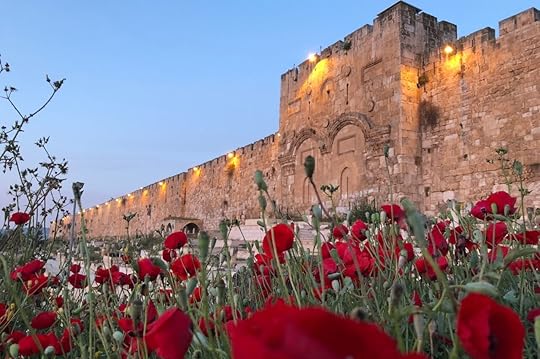
Photo: John Theodor/Shutterstock
Although it’s not Israel’s queer epicenter — that title goes to Tel Aviv, an hour’s drive east — a burgeoning cool-kid counterculture in Jerusalem defies religious stereotypes. Stroll around downtown and you’ll spot tattooed intellectuals sipping cortados as Orthodox men pass by in tallits (traditional Jewish prayer shawls). Spend an afternoon at Machaneh Yehudah Market, and you might have a religious experience sipping beer with hipsters rapping Nunu’s latest Hebrew hit. This isn’t just the Holy City — it’s the capital of Israel — a political powerhouse that acts as a magnet for all stripes of citizens.
Still, these glimmers of queer life can be hard to find if you don’t know where to look. To get the lowdown on Jerusalem’s LGBTQ+ scene, Matador Network spoke with local expert Jonathan Valfer for guidance. As founder of the queer party Tipulei Harama and board co-chair for the LGBTQ non-profit Jerusalem Open House (JOH), there’s no one better acquainted with the city’s queer scene.

Photo: John Garry. Jonathan Valfer.
From bisexual kings to Jerusalem’s gay version of a synagogue, here’s everything you need to know about the rainbow side of Israel’s religious stronghold.
Gay Jerusalem’s past and presentWhere to find Jerusalem’s LGBTQ+ community year-roundJerusalem’s LGBTQ+-friendly cafes and barsGay Jerusalem’s best eventsWhat you need to know before visiting JerusalemWhere to stay in JerusalemGay Jerusalem’s past and presentThere’s no denying it: Jerusalem is extremely conservative. “Ultra-Orthodox Jews and Palestinians make up about two-thirds of the population, and 99 percent of the gay people in those communities are in the closet,” says Valfer. As a result, the city’s LGBTQ+ history isn’t something you’ll learn about while touring places like the Wailing Wall (Judaism’s holiest prayer site). But for those in the know, Jerusalem’s queer community pre-dates many historical structures still standing today.

Photo: John Garry. The Wailing Wall.
Analyze the Hebrew Bible with a pink lens, and compelling anecdotes allude to queer love in the Kingdom of Judah, part of present-day Jerusalem. Just look at King David, whose relationship with the warrior Jonathan paints him as bisexual, if not gay. “The soul of Jonathan was knit with the soul of David,” reads 1 Samuel 18:1. In 2 Samuel 1:26, when Jonathan dies, David says, “…thy love to me was wonderful, passing the love of women.”
Then there’s the Book of Kings, which suggests homosexuality was widely accepted during Jerusalem’s First Temple Period (1200-586 BCE). According to media historian Elon Gilad, sacred male and female prostitutes likely resided in the kingdom’s temples and were used to connect with gods. Histories recorded by neighboring nations in the ancient Near East imply that male prostitutes probably wore women’s clothing and might’ve been castrated.
There might be a lacuna of queer history between the First Temple Period and contemporary times, but don’t let the lack of stories fool you. Queer life always has a way of lurking in the shadows.

Photo: John Theodor/Shutterstock
Head to Independence Park for a piece of this clandestine past. The park, a sprawling green space east of King George Street, was a reputed cruising spot for gay men before the advent of dating apps. Stick around as the sun goes down, and there’s a chance you’ll still find men seeking King David-style love among the bushes.
Today, Israel’s liberal LGBTQ+ laws mean queer folks in Jerusalem don’t have to hide their ROY-G-BIV proclivities. Same-sex sexual activity was officially decriminalized in 1988, and discrimination on the grounds of sexual orientation is illegal. While same-sex marriage has yet to be legalized, same-sex couples can marry abroad and have their union recognized by the government.
At the center of the city’s queer community is Jerusalem Open House, a non-profit that’s provided LGBTQ+ visibility and support since 1997. The grassroots organization flies a rainbow flag from its downtown outpost, where it organizes community functions like Pride and advocates for LGBTQ+ rights in Israel. Local groups dedicated to trans folks, women, seniors, and youth ensure there’s a seat at the table for everyone on the rainbow spectrum.
Still, Israel’s liberalism doesn’t mean openly identifying as part of the alphabet mafia is easy. “Being gay in Tel Aviv is normal — everyone is gay in Tel Aviv,” says Valfer. “Being gay in Jerusalem is political. It requires locals to fight for space in public areas. But I think the beautiful thing in Jerusalem is that when you see people who are different from you, they’re not monsters anymore. And you learn how to be much more tolerant of differences.”
Where to find Jerusalem’s LGBTQ+ community year-round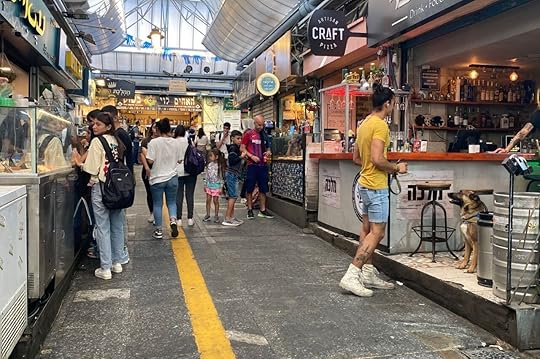
Photo: John Garry
Unlike the Old City’s clearly-defined quarters, most of Jerusalem feels like a curious experiment of colliding cultures. “On one hand, everything is very political and religious,” says Valfer. “On the other hand, there is a powerful secular community with intellectuals, professors, doctors, and students.” Within this sacred and secular hodge-podge, queer travelers can find their tribe by searching for familiar LGBTQ+ icons.
While the Orthodox Jewish community might look for kosher certificates at restaurants, non-religious folks use rainbow flags as a certificate of liberalism — and according to Valfer, all the liberal places in Jerusalem are queer-friendly. Most of these hangouts are cafes and galleries around what locals call ‘the Triangle’ — the Rehavia, Nachlaot, and the City Center neighborhoods.
Jerusalem’s LGBTQ+-friendly cafes and bars
Photo: John Garry. Cafe Bastet.
Coffee culture is integral to the queer Jerusalemite community, and there’s no better place to get your caffeine fix than Cafe Bastet. Walk up the gentle slope of Heleni HaMalka Street, and you’ll immediately spot rainbow flags. Owned by two queer women and heralded as a feminist meeting place, this relatively new day hang quickly became a go-to for Jerusalem’s LGBTQ+ crowd. On sunny days, order an espresso and join the throngs gabbing at outdoor tables. When winter comes, snuggle inside with a book and a classic Israeli breakfast. Make sure you stop by the bathroom to peep the mural by Brooklyn-based street artist Sara Erenthal, an ex-ultra Orthodox Jew who left home at 17 to avoid an arranged marriage.
Herbivores will love Imbala — a cafe, gallery, and event space that bills itself as feminist, queer, anti-racist, multi-lingual, multi-generational, and vegan. “I go there to support their mission,” says Valfer. The cafe prides itself on being a haven for anyone who doesn’t feel welcome by the Jerusalem majority.
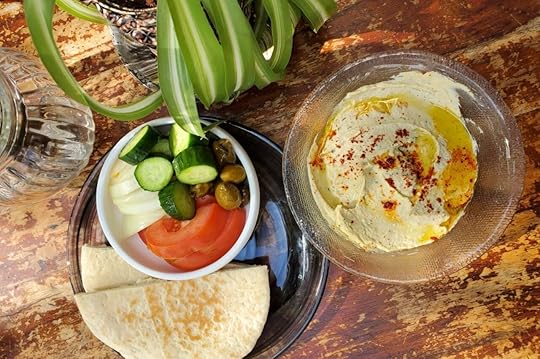
Photo: Imbala. Humous and pitta bread at Imbala.
Nearby spots like Cafe Liba (get the Italian-style sandwiches), Roasters Coffee (the best beans in town), and Pergamon (seasonal veggie fare in a historical setting) aren’t LGBTQ-centric but attract a liberal clientele. You’ll also find queer-friendly folks at contemporary art galleries like HaMiffal, a multi-use community space inside an abandoned 19th-century building where guests sip cocktails while admiring mural-adorned walls.
For after-hours activities, skip around the corner from Bastet to Video Pub — Jerusalem’s only LGBTQ+ watering hole. Look for the “V” posted out front and ascend the steps one floor above street level. Children take class at an Eritrean church next door, and if you arrive early, you might receive quizzical stares from intrigued youngsters.
“Video Pub is the synagogue of the gay community,” says Valfer. It’s a lot like Cheers — if everyone doesn’t know your name, they will by the time you leave. Although there’s a small dance floor, most patrons spend their nights chatting as the bartender slings drinks and plays their favorite pop tunes du jour. The dive attracts a mixed crowd, though Valfer says gay men make up the majority. Wednesdays are popular with the Sapphic set.
Gay Jerusalem’s best eventsJerusalem’s most prominent LGBTQ+ gathering is early June’s March for Pride and Tolerance — a parade that regularly attracts 10,000 attendees. Unlike Tel Aviv, where Pride is a party, this event is a protest, “and when you protest the government, the best place to do it is in the capital city,” says Valfer. While local governments in Tel Aviv and Haifa pay for Pride, the JOH must fund Jerusalem’s event without their local municipality’s support — an undertaking that costs the non-profit hundreds of thousands of dollars each year.
Since the march began in 2002, religious extremists have used threats and violence to push LGBTQ+ marchers out of the city — including a stabbing in 2015 that led to the death of 15-year-old Shira Banki. But intimidation from outside forces does little to scare queer crowds. A significant police presence protects marchers, and the fuel of rainbow solidarity propels participants along the route every year. Even in 2022, when event organizers received death threats, the parade went on as planned.
Don’t expect to see the panoply of corporate sponsors, shirtless beefcakes, or sex-forward scenes typical at other Pride events. In Jerusalem, you’ll walk with liberal religious leaders, protesting teens, allied parents, and a modestly-clothed crosshatch of queer Israelis from around the country.
For Valfer, his hometown’s take on Pride is refreshing. “In Tel Aviv, I feel the need to be a “professional gay,”” he says. “I need to dress in a particular way and look a particular way. I’m happy to march in Jerusalem instead, and feel like there’s a place for myself as I am.”
Valfer’s desire to find queer spaces that welcome all identities extends far beyond Pride.
Three years ago, he founded the LGBTQ+ pop-up party Tipulei Harama, which translates to “having fun therapy.” (The name is a play on “tipulei halama,” or conversion therapy, an iniquitous practice recently outlawed by the Israeli government but still prevalent in Orthodox Jewish communities.)

Photo: John Garry
“This was the first time in Jerusalem that there was a party for everyone in our community,” says Valfer, “not just gay or lesbian.” Jew, Arab, Orthodox, secular, queer, non-binary—if you can name it, you’ll find it at Tipulei Harama.
The party’s radical inclusivity — a rarity in Jerusalem’s divided city — attracts big crowds. At the first party, Valfer expected 50 people to show up; instead, 150 came. Now, each party feels bigger than the last, with attendees sometimes reaching one thousand.
With little to no clubs in Jerusalem, Tipulei Harama usually takes over large event halls — including spaces like the YMCA and even the Old City Walls, which the party once turned into a Paris is Burning-style catwalk. Check the party’s Instagram for upcoming events and destinations.
But if you’re looking for the lascivious-style parties of Tel Aviv, you’ll be sorely disappointed.
“In Tel Aviv, many people go to parties to cruise or find sexual partners,” says Valfer. “In small communities, it doesn’t work like that. You know everyone at the party. There is some sexual tension, but people come to have fun.”
Valfer’s definition of “having fun therapy?” His simple answer is centuries-old: dance. It’s a religion almost anyone can get behind.
What you need to know before visiting JerusalemWhen it comes to religious observance, it doesn’t get more strict than Jerusalem. That means Shabbat — Judaism’s day of rest between sundown on Friday and sundown on Saturday — turns the city’s streets into a ghost town. Unless you partake in the religious day of observance, stick to Tel Aviv or plan a day of hiking in the desert. If you stay in Jerusalem, you’ll be hard-pressed to find open restaurants and activities. The same goes for religious holidays — check the calendar before making travel plans.
Where to stay in JerusalemIt’s possible to see Jerusalem’s top sites in a day, but Valfer recommends at least two nights to get a feel for the city. “You need to have time in Jerusalem,” he says. “It helps you understand life in the entire country.” If you choose to stay overnight, these are some of the most centrally-located spots to call home.
We hope you love the spaces and stays we recommend. Just so you know, Matador may collect a small commission from the links on this page if you decide to book a stay.
King David Hotel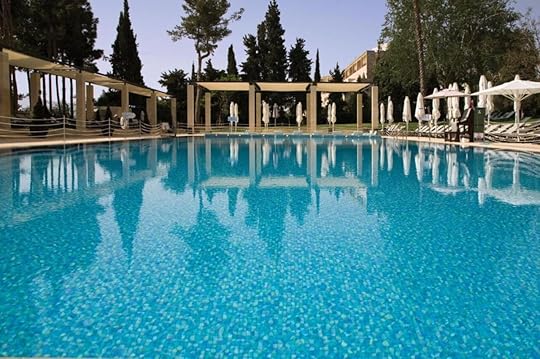
Photo: Booking.com

Photo: Booking.com

Photo: Booking.com
Velvet headboards, pink sandstone facades, and an inground pool under azure skies. If you’re willing to splurge, it’s worth playing king at this ritzy resting pad near the Old City. The King David Hotel earns its royal name with grade-A decor, and if you like the queer take on King David and Jonathan, why not live out their modern romance in his eponymous hotel?
The Post HostelSave a buck by booking a room at this hip, young hostel five minutes away from the Video Pub. Located on the top floor of Jerusalem’s historic Central Post Office, built between 1934 and 1938, the building evokes bygone Jerusalem while placing you within walking distance of the city’s contemporary treasures.
Villa with garden in the heart of Jerusalem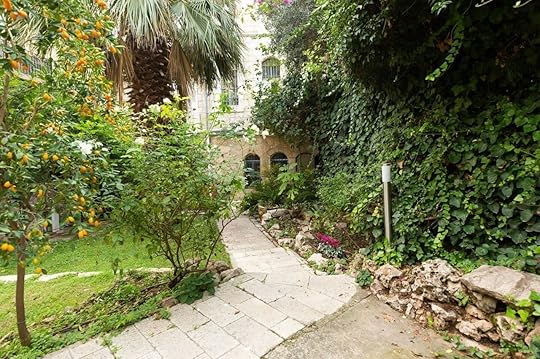
Photo: Airbnb
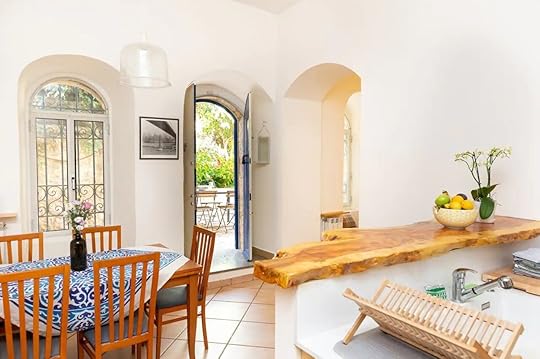
Photo: Airbnb

Photo: Airbnb
After wandering the Holy City’s bustling stone streets, kick back in this Airbnb‘s private garden. The building’s Ottoman-era architecture matches Jerusalem’s old-world vibe, so you can spend your entire trip steeping in Middle Eastern history.
Luxury central apartment Even Israel #50Sweeping city views and a ten-minute walk to the yummy Machane Yehudah Market make this contemporary apartment rental perfect for travelers looking to tuck into Jerusalem’s edgier side. 
July 5, 2022
A Study Found the 10 Hotels With the Most Beautiful Views Around the World
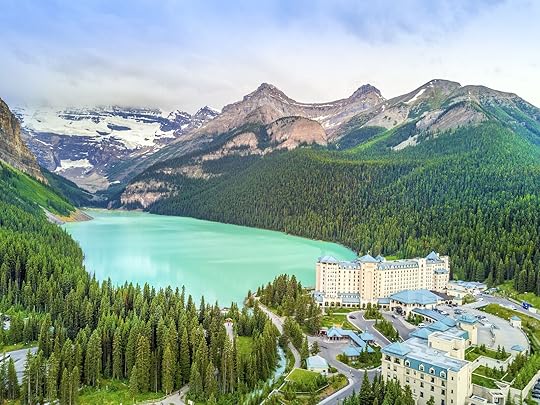
There are lots of factors that go into choosing your next vacation destination. Maybe you’d enjoy the whimsy of staying in the Cartoon Network hotel or want to stay at an all-inclusive resort that actually has impressive food — or perhaps you’re intrigued by the idea of staying at a treehouse in the arctic or luxury accommodations near a national park.
But one undeniably ideal perk regardless of where you choose is the opportunity to catch beautiful views from your hotel. HawaiianIslands.com, an authoritative voice on all things Hawaii, conducted a study of reviews to find you the best hotels with beautiful views around the world.
If you’re looking for the best views in Canada, TripAdvisor reviews of the Fairmont Chateau in Lake Louise mention the view 1,772 times. One of the best places to glimpse the clear blue lake surrounded by mountains is the breakfast restaurant, along with several (not all) of the guest rooms. The second top hotel in the world with the most reviews about beautiful views is in Sin City. The Wynn Las Vegas has excellent views of the strip, and you’ll catch every glimmer as it lights up at night. But the most beautiful hotel views in the world are found at Pueblo Bonito Sunset Beach Golf and Spa Resort in Cabo San Lucas, Mexico. There’s nothing like seeing and hearing crashing waves to rock someone to sleep at night.
The 10 hotels with the most beautiful viewsPueblo Bonito Sunset Beach Golf and Spa Resort in Cabo San Lucas, Mexico: 2,280 mentionsWynn Las Vegas in Las Vegas, Nevada: 1,949 mentionsFairmont Chateau Lake Louise in Lake Louise, Canada: 1,772 mentionsSandals Regency La Toc in Castries, St. Lucia: 1,612 mentionsMarina Bay Sands in Singapore: 1,551 mentionsTulemar Bungalows & Villas in Quepos, Costa Rica: 1,175 mentionsAmari Phuket in Patong, Thailand: 1,174 mentionsRome Cavalieri, A Waldorf Astoria Hotel in Rome, Italy: 989 mentionsHotel Croatia Cavtat in Konavle, Croatia: 906 mentionsHilton Budapest in Budapest, Hungary: 734 mentionsTo find the hotels with the best views, the site used TripAdvisor to search for hotels with the keyword “beautiful view” around the world. The Hawaiian Islands then awarded the listings with the most keyword mentions as the highest rated hotel. When more than one hotel had the same number of mentions, whichever hotel had the highest overall rating on TripAdvisor got preference. Hotels with fewer than 10 mentions of a beautiful view or less than 100 reviews were excluded from the study. 
6 Caves in Puerto Rico Where You Can Hike, Float, and Go Tubing Underground
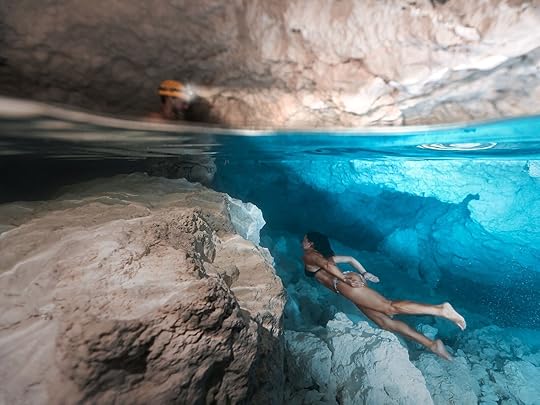
While there’s no official count, it’s estimated that there are around 2,000 caves in Puerto Rico – quite a lot for one island. However, just a small fraction of them – around 415 – have been explored. Fortunately, several are open to the public and provide adventure opportunities, including spelunking, rock climbing, swimming, rappelling, and rafting. Some are fairly accessible and welcoming to visitors of all ages, while others require special skills or equipment.
If you’re planning a trip to Puerto Rico, check out these six caves throughout the island, where tours range from gentle walks to group cliff-jumping adventures
Río Camuy Caves
Photo: Felix Lipov/Shutterstock
As the largest system of caves in Puerto Rico and the third-largest in the world, Río Camuy Caves is a top attraction for locals and visitors. Vast parts of this system are still unexplored, but to date, 220 caves and 10 miles of caverns have been identified. (A cavern has multiple openings while a cave has just one).
Río Camuy Cave Park is in the northwest region of Puerto Rico, about an hour and a half outside of Puerto Rico’s capital city, San Juan. Tours are offered daily and ideal for most ages and fitness levels since the paths into and through the caves are paved. Visitors can choose from an audio tour or a live guide, both of which provide information on the history and geology of the area.
A tour begins with a downhill walk to the cave’s entrance, then heads inside where hundreds of stalactites and stalagmites come into sight, some as wide as thirty feet. After weaving through the caverns for a while, visitors will see sunlight in the distance; a prelude to the enormous opening soon to appear in the limestone walls. Looking through it from within the cave is beautiful, offering a peek of the jungle’s bright green ferns and chirping birds. After enjoying the picturesque scene, tours retrace their steps back to the cave entrance to make the short return walk uphill.
Cañon de Tanamá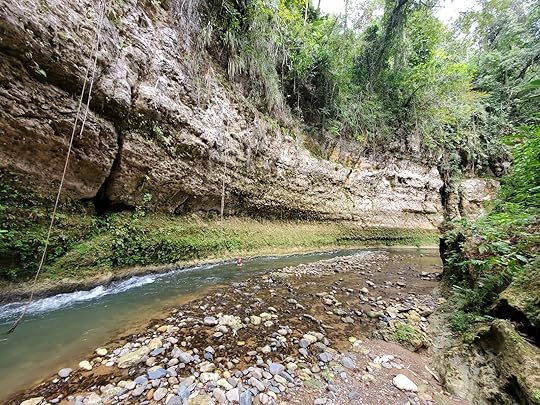
Photo: Nathaniel Arocho/Shutterstock
Travelers keen on a slightly more active adventure should visit Cañon de Tanamá, a network of canyons, caverns, and tunnels carved by the ancient Tanamá River. A highlight of this network of caves in Puerto Rico is a 1,000-foot-long tunnel formed by the river over thousands of years and takes up to thirty minutes to float on a rubber tube. Other caves feature giant stalactites and stalagmites along with cave-dwelling wildlife like tiny bats, interesting insects, and endemic tropical frogs,
Most visitors to Cañon de Tanamá begin in Utuado, a small town in the mountainous region of Puerto Rico, about one and a half hours from San Juan. The most popular way to explore this natural wonder is on a half-day tour with companies like Tanamá River Adventures or Explora PR. ON tours, travelers start with a short hike through the forest before traversing through caves, canyons, and waterfalls. Most tours end with tubing, body rafting, or rappelling along the river; adrenaline junkies will want to book a tour that includes the chance to jump from cliffs into the cool waters below. Since this experience includes hiking, climbing, and swimming, it’s best suited for those of average fitness and health.
Longer and more challenging tours, including rappelling into caves and caverns, are also available for adults and teens.
Cueva del Indio
Photo: alexsf.gr/Shutterstock
Cueva del Indio is not only a geological wonder and an important cultural site, but also a popular Hollywood filming location for blockbuster movies – the most well-known of which may be 2011’s Pirates of the Caribbean: On Stranger Tides.
On the Atlantic Coast, this cave offers views of crashing waves, a natural rock bridge, and the opportunity to see hieroglyphs carved by the indigenous people of Puerto Rico: the Taino. Because of these carvings, Cueva del Indio was added to the National Register of Historic Places in 2003.
Cueva del Indio is in the town of caves, just an hour outside of San Juan. After parking, it’s a one-mile, moderately easy trail to the top of the cave. You’ll need to climb down into the cave to see the petroglyphs and there’s no longer a ladder — likely to reduce foot traffic into the cave. It’s not recommended, but it is possible to enter the cave through a small gap if you have grippy footwear and long pants. But if you decide you’d rather not climb into the cave, you’ll still enjoy the trip as the views of the dramatic rock formations and crashing waves are quite impressive.
You can visit on your own or take a half-day tour from San Juan with companies like Access Tours PR or Airbnb Experiences.
Cueva del Viento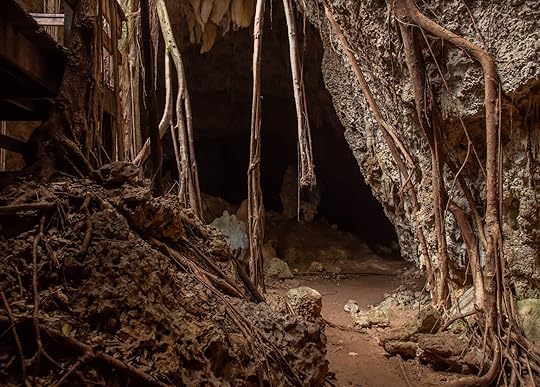
Photo: Discover Puerto Rico
Cueva del Viento is a limestone cave inside Guajataca National Forest filled with fascinating stalactites and stalagmite formations. It’s also home to a sizable colony of bats, so be prepared to see and hear plenty of these flying creatures.
The cave is in the northwestern town of Isabela, about two hours from San Juan. There’s a 2.7- mile, out-and-back trail to the entrance, so come prepared with proper footwear and plenty of water. The wooden steps into the cave aren’t in great shape, so proceed cautiously. And since there’s no lighting, bringing a flashlight is advised – the light from a cell phone may not be enough. Don’t shine the light directly at the bats to avoid upsetting them. The cave is easy to visit on your own and there’s plenty of parking near the trailhead.
Cuevas Arenales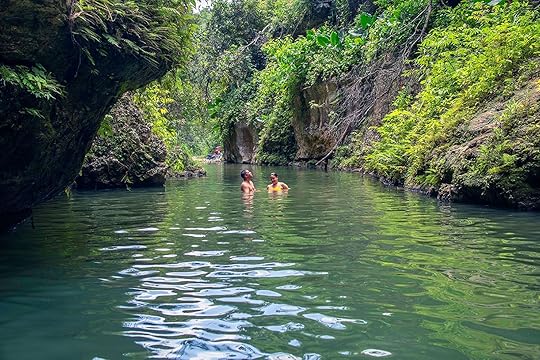
Photo: Puerto Rico as a Local
If you like the idea of swimming, not hiking, through caves in Puerto Rico, Cuevas Arenales and Charco Azul (“sand cave and blue pool”) should top your list. The actual cave is underground, but it’s surrounded by a collection of tunnels, cliffs, and slot canyons formed by water and erosion over millions of years. It’s a natural playground for adventurers and the perfect way to spend half a day.
It’s in Vega Baja, just an hour from San Juan. A visit to Cuevas Arenales will involve some hiking, rock scrambling, wading, and, ultimately, swimming. You will definitely get wet, so wear a swimsuit and dress accordingly. While it’s certainly possible to explore Cuevas Arenales on your own, a full-day guided tour is also a good option. Local guides can help navigate the cave’s dark and underground portions and point out the best places to cliff jump into the deeper pools. Look at options from tour companies like NaturHabitat Eco Tours or Puerto Rico as a Local.
Cueva del Agua
Photo: Discover Puerto Rico
Cueva del Agua is the hardest of the caves in Puerto Rico to reach as it’s on Mona Island — a nature reserve off Puerto Rico’s western coast. There are no hotels or facilities — just a few campsites — and the boat ride to get there takes about four hours. You need a permit from the Department of Natural Resources of Puerto Rico to land on the island, so if you want to see the cave and the rest of the island’s trails and activities, you’ll need to book a tour. Contact Acampa Puerto Rico or Adventures TourMarine to inquire about having them arrange trips. Both companies can land on the island and arrange private hiking and camping trips from the mainland.
Tips for visiting caves in Puerto RicoAs you’d expect from a tropical island, rain and storms are frequent events in Puerto Rico. Access to caves may be restricted during bad weather, so check on the conditions before visiting.
Only Río Camuy Cave Park is a developed attraction. The other caves in Puerto Rico on this list have little infrastructure for visitors, so come prepared with everything you’ll need for the day – don’t expect bathrooms, gift shops, or visitors centers. Nearby parking lots are typically privately owned and fees vary from $2 to $10. You likely won’t have much cell service once you get into the jungles and natural parks, so be sure to download your trail map if you’re using an App like AllTrails or Gaia GPS. 
I Won’t Fly Without This Useful Travel Gadget, and It’s on Sale for $30 Until July 13

I‘m a travel writer, and if you know anything about travel writers, you know that we fly a lot. But if you know anything else about the current state of journalism, you probably know that we don’t exactly make the big bucks, so we always fly in economy, even on 20+ hour flights. Because I’m a frequent flyer, I’ve gotten pretty good at combating most annoyances of flying in economy — I bring an inflatable pad to avoid butt pain, a coffee mug to avoid airplane coffee, and, yes, I’m that person with a dorky foot hammock clipped to my tray table.
But the one problem I hadn’t overcome is finding a way to use the headrest TV screen audio and my noise-cancelling earbuds. I always had to either watch a movie with the free airline headphones (which block so little outside noise that you can hardly hear the movie) or carry an extra cord to plug my headphones into the screen (which inevitable would get pulled out each time I shifted in my seat).
So I was thrilled when I learned about the TwelveSouth AirFly Pro — a tiny, ultralight Bluetooth adapter that plugs into the headrest TV screens. It pairs with all wireless headphones, allowing users to watch airline TV screens with their own personal headphones.
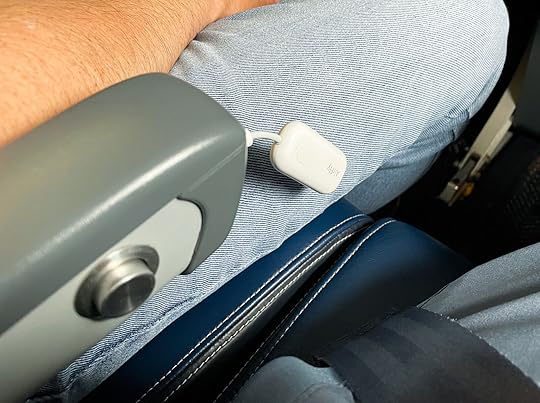
The AirFly Pro works whether it’s plugged into the back of the seat or an armrest port. Photo: Suzie Dundas
I usually try to sleep on planes, and the only way I can ever fall asleep is by blocking out as much noise as possible. But I also like to fall asleep to the sounds of some TV show or movie I’ve seen before, so the AirFly Pro is really a game-changer. It weighs .5 ounces (i.e. nothing) and is two inches long by one inch wide, so it fits in the tiniest of carry-on bags.
We hope you love the Airfly Pro and devices we recommend below. Just so you know, Matador may collect a small commission from the links on this page if you decide to buying anything. Listed prices are accurate as of the time of publication.
Battery life
The AirFly Pro, in my experience, has fabulous battery life. It has a claimed battery life of 16 hours, and while I’ve never used it straight for that long without recharging it, it’s good to know it can keep you entertained from takeoff in San Francisco to landing in Abu Dhabi. Fortunately, it also charges very quickly. I’ve juiced up the AirFly Pro off my portable charger in about two hours, though plugging it into a wall socket is much faster — I’ve gotten what appears to be close to a full charge after an hour.
Other usesI use my AirFly Pro mostly on flights, but it can turn any device with a standard headphone jack into a Bluetooth-capable device. That includes cars without Bluetooth, home speakers, or even a record player.
Pairing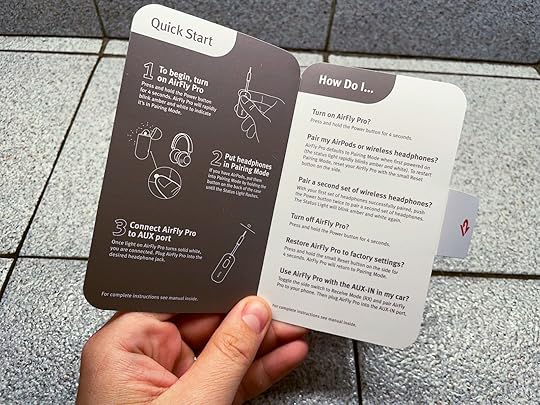
The instructors are short, sweet, and easy to follow. Photo: Suzie Dundas
I’m not exactly someone who “reads directions” when setting up a new device, but since the AirFly Pro has a mere two buttons, it’s easy to pair with just about any device using a “trial and error” process. I paired my Bose earbuds, iPad, and iPhone all in under three minutes. That said, if you read the instructions, pairing moves even faster. The device is so simple and works so smoothly that even the least tech-savvy among us should be able to pair it on the fly (pun intended).
Airfly Pro vs. AirFly Duo
Photo: Suzie Dundas
There are actually four different Twelve South AirFly options: AirFly Classic, AirFly Duo, AirFly Pro, and AirFly USB-C. I’d rule out the AirFly Classic for most buyers. While it’s a bit cheaper, the battery is only around eight hours. The AirFly Duo’s main feature is the ability to connect to two headphones (with 20-hour battery life) and the AirFly USB-C is best for users who want to plug it into a USB-C port (like those on MacBooks). But the AirFly Pro is going to be the best option for most buyers, especially given the long battery life and ability to act as a receiver (so you can use the AirFly Pro to send audio to other devices, like in a car). The AirFly Pro also works with two devices at once.
Any downsides?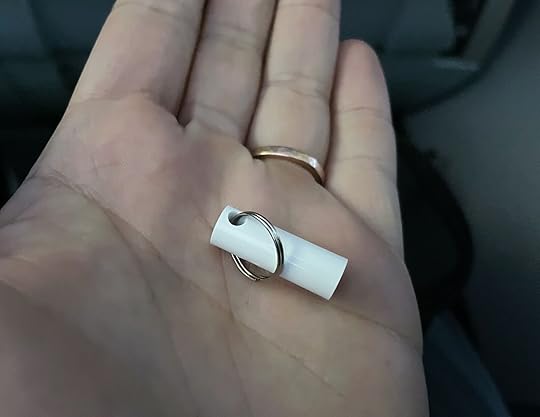
I recommend using the keyring attachment to easily find it in your carry-on backpack. Photo: Suzie Dundas
I’ve encountered only two downsides: the device is quite tiny, which means it can be easy to loose. I recommend using the keychain attachment to clip it to your carry-on backpack‘s keyring (if it has one). And you may need an adapter if you’re flying in an older plane with the two-prong/double audio jack. Otherwise, it may only play sound in one of your earbuds. But see below for a quick adapter recommendation.
My main concern with any adapter product is usually lag, but I haven’t noticed it yet. My guess is it could be an issue in older planes, but I’ve used this on smaller planes that certainly weren’t the newest in the fleet, and so far, so good.
Other AirFly Pro accessories and recommendationsBose QuietComfort Noise Cancelling Earbuds
Photo: Suzie Dundas
I love traveling light so bulky noise-canceling headphones are a no-go for me. But I’m constantly stunned at the noise-canceling abilities of the Bose. I had no idea earbud technology was so good, especially since I was using my cheap Apple wired headphones before these. Yes, they are really expensive — but they make the difference in being able to sleep or not on a plane and take up less space than a granola bar in my bag.
Dual Airplane Headphone AdapterI recommend buying one of these to keep in the carrying case for the AirFly Pro so you have it when you need it. The Airfly Pro plugs snuggly into these adapters and weighs so little that it won’t pull the adapter out, even if it’s hanging the whole flight.
More like thisTechnology + GearThe Perfect Backpack for Every Type of Traveler, From Hostelers To HikersJersey City Restaurants Are Just as Good as Anything in NYC. Here’s Where To Go.

Jersey City, New Jersey, has long been overshadowed by its more famous neighbor. And I get it: New York City is bigger with more to experience and more people to meet – not to mention there are way more restaurants, many of which have been crowned among the best in the world. But let’s not overlook the underdog.
Jersey City, though small in comparison to New York City, is crowded with some of the most interesting food in the United States. In fact, the New York Times already declared that the best pizza in New York City is actually at downtown Jersey City’s Razza. I know it’s not a competition, but Jersey City restaurants have just as much style, ambience, and, of course, good food as anything you’ll find in New York.
Razza isn’t on my list of Jersey City restaurants that every visitor needs to try. Most people who plan their travels around where they want to eat already know it’s good. Instead, I want to show you the spots that Jersey City locals swear by. These are restaurants to go to when you’re just visiting for a day or two and you have to pack in the best food in Jersey City before you head to your next destination.
Just remember, Jersey City is home to more than 200,000, people spread across many different neighborhoods from The Heights to Bergen-Lafayette to McGinley Square. It’s routinely named either the most or second most diverse city in the country. And the food we eat here reflects all the cultures that come together to make Jersey City as special as it is. But it will almost definitely take more than one trip here – and exploration outside of the popular downtown area – in order navigate the city’s rhythms.
The atmosphere at most restaurants in Jersey City is friendly and playful. Case in point: One afternoon, my partner and I were out to lunch at one of the restaurants on this list, Bread and Salt. He decided to buy a certain type of pasta from the adjoining shop – thick, extra long hollow tubes that wouldn’t fit in any of our pots but that looked too good to ignore. One of the chefs was so impressed by the purchase that he came out from the kitchen and shook his hand.
I’m not saying you can expect a handshake every time you go out for lunch or dinner, but you can expect that level of convivial connection with the people making your food. Jersey City is only 10 minutes from downtown Manhattan on the PATH train, so there’s no excuse for not dropping in for a day trip or an overnight stay. Explore the many facets of this charming city and you might not want to go back to New York City so quickly.
Jersey City restaurants everyone needs to trySam A.M.View this post on InstagramA post shared by sam a.m. (@sam_am_cafe)
There’s usually a wait at this staple cafe in Paulus Hook, one of the Jersey City restaurants I hesitated to even write about because I fear it being overrun by out-of-towners. But truthfully, everyone deserves to try the delightful fare at Sam A.M.: Sausage topped biscuits, pillowy waffles topped with succulent pieces of chicken and thick gravy, a fried egg sandwich adorned with nothing but a juicy Jersey tomato and house-made pimento cheese that I guarantee you’ll never forget. The coffee is strong, and it’s worth grabbing a pastry from the register before paying your tab.
Gregarious chef and owner Francis Samu will likely greet you at the door, and he checks on and chats with patrons during the meal. Chef Francis also sold locals his extra toilet paper and vegetables when the restaurant had to close during the height of the COVID-19 pandemic, which I will never forget.
What to try: The Pimento (fried egg, house pimento, lettuce & tomato on ciabatta)
Where: 112 Morris St, Jersey City, NJ 07302
DomodomoView this post on InstagramA post shared by DOMODOMO Jersey City (@domodomojc)
This chic sushi restaurant near Exchange Place and the Hudson River focuses on simple, exceptionally fresh cuts of fish. Domodomo‘s wood-paneled interior design reflects the minimalism and elegance of the food here. Hot dishes include uni pasta and smoked pork belly, and all the classic rolls and sashimi from yellowtail to salmon roe are all available. Diners can also sample lobster, blue crab, and scallop sushi rolls and a 12-piece omakase menu is served at the bar.
Ample Hills Creamery is located just steps away if you want to end dinner with some of the best ice cream in Jersey City.
What to try: 12-piece sushi omakase served at the sushi bar
Where: 200 Greene St, Jersey City, NJ 07311
Taqueria DowntownEvery single time I drive by this taco spot located in the basement of an apartment building, there is a line out the door. People are pacing the sidewalks waiting for their tables. People are clutching drinks on the patio, straining to hear their names called by the hostess. Hungry locals come to Taqueria Downtown for the super strong margaritas and the simple, well-cooked, perfectly seasoned tacos, wrapped lovingly in two flour tortillas and served in a playful, energetic atmosphere. Oh, and there’s a backyard too, making it one of the most bumping restaurants in Jersey City in the warmer months.
What to try: Chorizo, carnitas, barbacoa tacos
Where: 236 Grove St, Jersey City, NJ 07302
Bread and SaltView this post on InstagramA post shared by Bread And Salt (@breadandsaltbakery)
This cafe and bakery in The Heights is well on its way to becoming an iconic Jersey City establishment. For now, Bread and Salt is open for walk-up ordering, but there are tables set up outside where diners can feast on their food. Here, you’ll find bomboloni filled with delightful ingredients like rhubarb and chamomile cream, maritozzo (a Roman pastry filled to the brim with whipped cream), and olive oil cake. Opt for a box of pastries to take home, but it’s also worth taking the time to order a pizza and eat it at one of the sidewalk tables. The oval shaped pies are perfectly crispy and hot, and you can taste the high quality ingredients Bread and Salt is known for in every bite.
What to order: Whole mozzarella pizza, bomboloni
Where: 435 Palisade Ave, Jersey City, NJ 07307
Wurstbar
Photo: Wurstbar
I like to think of the menu at Wurstbar as sophisticated comfort food. There is a selection of delectable poutine, topped with creative ingredients like mango chutney or buffalo fried chicken, for starters. Then there’s the main event: the sausages and brats. Polish kielbasa, chorizo, and cheddar brats, among other options, are smothered in toppings that range from queso fresco to chive cream cheese to fig mustard. This is not the disappointing hot dog from the ballpark, this well thought out, exciting food that is fun to eat.
Another reason to drop by Wurstbar? The cider selection is comprehensive and for aficionados like myself, I enjoy stopping in to just peruse the selection, try something new, and munch on an order of fries.
What to order: Fried cheese curds, Rancho Grande (Spanish chorizo, avocado, queso fresco, pickled onions, chili lime mayo), Haus Poutine
Where: 516 Jersey Ave, Jersey City, NJ 07302
Madame Claude’s BisThis sophisticated French restaurant is housed in one of the coziest, most stylish spaces in Jersey City. The lighting is low, the ambience is romantic, and the wine is always flowing. The French classics are on the menu at Madame Claude’s Bis, like duck confit, couscous, and coq au vin, and all are rich and flavorful, but what I really love here is the small plates – the mussels, stuffed mushrooms, and divine escargot. Madame Claude’s is the type of place I reserve for special occasions. But it’s also perfect for a cocktail and a snack on a whim – if you can find space at the bar.
What to order: Escargot, stuffed mushrooms, curry mussels, steak frites
Where: 390 4th St, Jersey City, NJ 07302
Corto
Photo: Corto
This BYOB Italian sit-down restaurant in The Heights is just a short walk from Bread and Salt. It’s a sparse and no frills space – a small dining room with a totally open kitchen – that’s taken up mostly by a couple of long communal tables and as well as some tables for two. But don’t be fooled: Corto is decadent Italian fare with layers of flavor pulled rom ingredients like black truffle, calabrian chili, and arugula pesto. But the food never feels heavy or fussy, it’s just well made food in a stylish but casual atmosphere.
There are hearty main dishes here – chicken and pork for instance – but what you really need to gravitate toward is the pasta.
What to try: Ricotta and honey toast, Angry Chicken (tomato, garlic, guanciale, thyme, chianti, calabrian chili), rigatoni (bianco di napoli tomato, pancetta, calabrian chili, basil, mint, pecorino romano)
Where: 507 Palisade Ave, Jersey City, NJ 07307
Saigon CafeSaigon Cafe isn’t fancy, but it’s just what you need: Deeply satisfying, soul rejuvenating pho. Pho is typically a dish enjoyed in the colder months, but I crave the pho from Saigon Cafe all year around, even in the summer, when it’s muggy and hot out. The menu also includes Southeast Asian dishes like claypot shrimp and chicken curry (in fact, the menu is expansive), but I come back here time and time again for that classic pho, which never fails to taste and smell delicious and inviting.
What to order: Pho bo
Where: 188 Newark Ave, Jersey City, NJ 07302
RustiqueI know that most people will argue that the best pizza in Jersey City is Razza, but I’m personally partial to pies at Rustique, near Hamilton Park. The unassuming building, which is shaded by a large tree on the sidewalk, creates simple, classic pies that might look the pizza anywhere else in the city but are made with much more care and thoughtfulness. There’s the perfect ratio of sauce to cheese, a crunchy curst (if you’re into that), and the dough itself which is not too thick or dense, but not so thin that it can’t support the toppings.
What to order: Rustique is consistently good no matter what type of pie you get but the real triumph is the Kathy pie, which swaps out tomato sauce for a transcendent vodka sauce — hands down my favorite pizza in Jersey City.
Where: 611 Jersey Ave, Jersey City, NJ 07302
Lobster Garage at Lighthorse TavernView this post on InstagramA post shared by The Lighthorse Tavern (@lighthorsetavern)
This outdoor, sidewalk seafood bar is one of the most charming places to eat in Jersey City, especially in the summer. Situated behind Lighthorse Tavern, Lobster Garage is supposed to imitate a New England-style seafood shack: Cold beer, oysters, clam chowder, and lobster rolls are served from a bar in an actual repurposed garage. Diners relax at picnic tables on the sidewalk, sipping drinks in the sunshine. The Lobster Garage isn’t cheap, but it’s worth stopping by on a warm afternoon for the convivial atmosphere. It’s also the perfect spot for day drinking.
What to order: Fresh oysters, lobster bisque, fried shrimp basket
Where: 98 Morris St, Jersey City, NJ 07302 
Delta’s Futuristic New Parallel Reality Boards Track You To Show Personalized Flight Updates

It’s not uncommon for science fiction to depict hyper-individualized technology that shows personal information in public spaces. Science fiction is becoming reality in the travel industry thanks to Delta and Parallel Reality.
Parallel Reality allows up to 100 people to see their personalized flight information on the same screen. What you see depends on where you’re standing, and the displayed information looks different depending on your position. So while there is the chance that someone in the same position as you or standing behind you can see your flight information, they’d have to be within one to three degrees of your line of vision.
“If this new technology can make finding your gate and departure information quicker and easier, we’re not just showing customers a magic trick — we’re solving a real problem,” Delta’s senior vice president of customer experience Ranjan Goswami said in a statement. “Customers already rely on personalized navigation via their mobile devices, but this is enabling a public screen to act as a personal one – removing the clutter of information not relevant to you to empower a better journey.”
When it comes to following your flight, checking an airline’s app or searching for the flight on Google often does the trick. However, when flights change gates last minute or unexpectedly, your phone might not be able to deliver the most up-to-date information in a timely enough manner. Instead of scanning long flight boards in a hurry, Parallel Reality makes finding your flight all the easier.
@tiffster111 #parallelrealityexperience #delta #dtw #flight #boarding ♬ FEEL THE GROOVE – Queens Road, Fabian Graetz
The implementation has been three years in the making after Delta’s team at its global innovation center called The Hangar came across the technology from the tech start-up Misapplied Sciences.
Parallel Reality works in tandem with the digital identity technology being rolled out across airports that allow people to use facial recognition to check in rather than show their ID and boarding pass. Those who opt-in can use the same facial recognition at a kiosk screen to see their flights on the Parallel Reality board. Others can scan their boarding pass to see the same info.
You can see a demo of Parallel Reality for yourself on Concourse A of Delta’s McNamara Terminal.
11 Rapid City Airbnbs To Experience the Best of South Dakota

The gateway to the Badlands National Park, Black Hills, and Mount Rushmore, Rapid City is a destination to add to the top of your travel agenda. Rapid Creek bisects the “City of Presidents” which is teeming with restaurants, parks, and cultural attractions. Lodgings sway from swanky downtown lofts to remote cabins. Cast your eyes over our pick of top-rated Rapid City Airbnb vacation rentals.
Airbnb Cabin rentals in Rapid CityRapid City Airbnb FarmstaysDowntown Rapid City AirbnbsPet-friendly Rapid City AirbnbsWe hope you love the Airbnb Rapid City stays we recommend! Just so you know, Matador may collect a small commission from the links on this page if you decide to book a stay. Listed prices are accurate as of the time of publication.
Traveling through South Dakota? Check out Matador’s South Dakota Airbnb guide.
Airbnb Cabin rentals in Rapid CityThese Rapid City cabins give you the best perspective on Rapid City as well as incredible access to the outdoors. Bring your hiking boots!
In the trees, close to town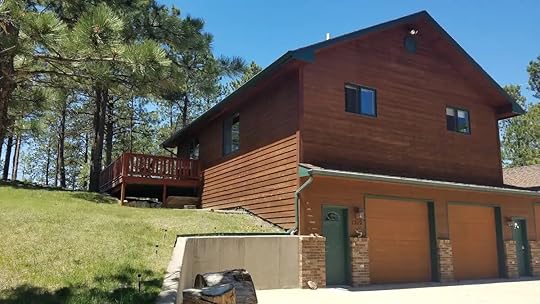
Photo: Airbnb

Photo: Airbnb

Photo: Airbnb
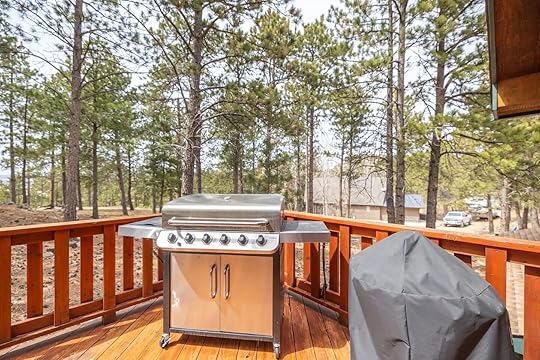
Photo: Airbnb
Despite being a brief drive from city limits, the silence at this two-bedroom cabin will lead you to believe otherwise. The property is perched among the trees high on a hill with awesome valley views. Sit out on the deck while tending the grill and you might make friends with the local turkeys, deer, and birds. Interiors are ultra-luxe with modern appliances and tasteful furnishings. Arrive at a fully-stocked Rapid City Airbnb using the host’s reasonably priced grocery service.
Five guests, two bedrooms
Price: $250 per night
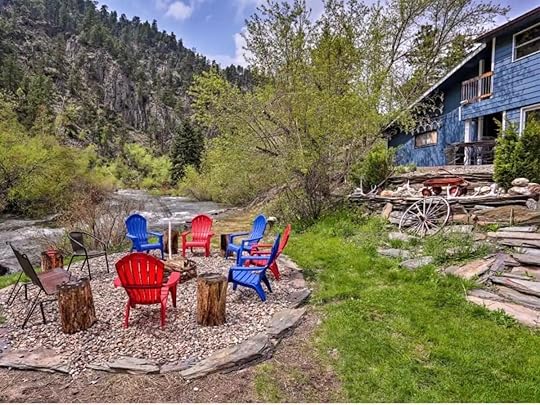
Photo: Airbnb

Photo: Airbnb

Photo: Airbnb

Photo: Airbnb
This little blue cabin is outfitted with rustic interiors, a fireplace, and Scandi touches that fully live up to the Hygge concept. Besides the two bedrooms, there are two designated working spaces for remote workers or budding novelists. The cabin rental occupies a secluded spot on the creekside with a fire pit, grill, and seating areas making it easy to embrace the great outdoors.
Six guests, two bedrooms
Price: $235 per night

Photo: Airbnb
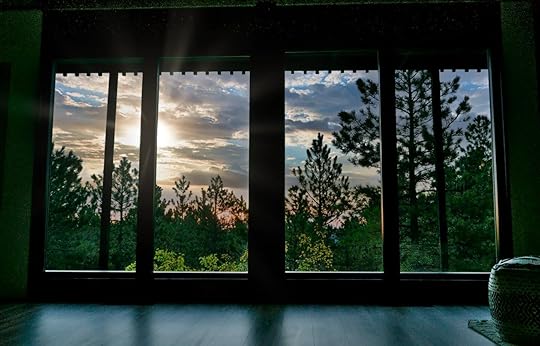
Photo: Airbnb

Photo: Airbnb
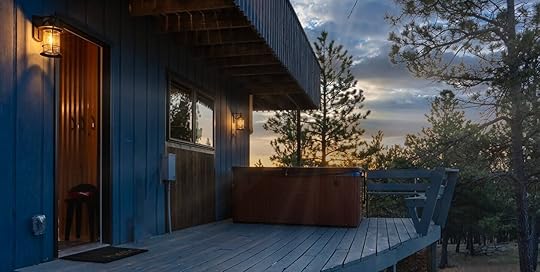
Photo: Airbnb
Soak up sweeping views over the Black Hills from the comfort of your outdoor hot tub. This bespoke studio radiates a homely vibe through its fully-equipped kitchen, electric fireplace, and woody interiors. Floor-to-ceiling windows overlook the ponderosa pines so you can cook and snuggle on the sofa with a view. The cabin is located in the ranges on the edge of Rapid City for a blend of convenience and tranquility.
Two guests, one bedroom (studio)
Price: $315 per night

Photo: Airbnb

Photo: Airbnb

Photo: Airbnb
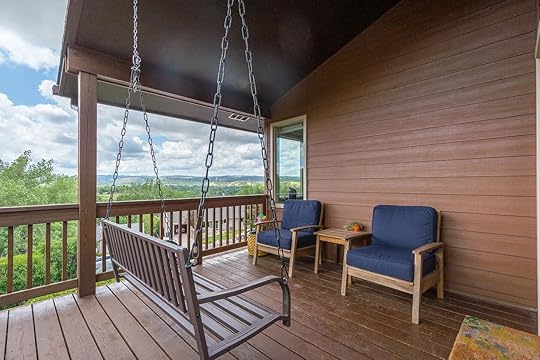
Photo: Airbnb
Light, airy, and luxurious, this hillside bungalow grants mountain views. In addition to a spacious great room with panoramic windows, you’ve got an entertainment den complete with a large TV and board games. The patio is fitted with a hot tub, fire pit, and swinging chair for lazy afternoons after hiking. Keep your eyes peeled for resident deer, fox, and coyote. Downtown is a 20-minute drive and there’s a convenience store within walking distance.
Ten guests, four bedrooms
Price: $485 per night
Rapid City combines urban culture with Dakota roots, meaning there’s no excuse not to get country! These properties help you capture the farm vibe.
Farm♡tastic stay @ Hills Roost Farm
Photo: Airbnb

Photo: Airbnb

Photo: Airbnb

Photo: Airbnb
This kooky Rapid City farm stay is a self-contained studio in the lower level of an organic farmstead. Strategic rooms allow privacy between the bedroom and lounge for those vacationing with children. Swing open the door to the verandah in the morning and you’ll be greeted by free-range chickens and organic eggs. As a guest of Hills Roost Farm, you are encouraged to explore the gardens – plucking fresh berries as you do – and check out the hiking trails on the doorstep.
Three guests, one bedroom (studio)
Price: $195 per night

Photo: Airbnb

Photo: Airbnb

Photo: Airbnb

Photo: Airbnb
This spotless Rapid City Airbnb barn rental is prepared with top-of-the-line appliances and premium linens and towels. Further to the master bedroom, the couch in the lounge rolls out into a second sleeping option. The perk of this gold-standard property is the covered porch with a propane fire pit and enchanting views over the countryside. Even better, the hosts have been known to leave locally brewed coffee and other treats to enhance the experience. 
Four guests, one bedroom
Price: $120 per night
Rapid City hosts South Dakota’s best dining and nightlife. These properties put you within walking distance to it all.
The Cottage on Saint Cloud
Photo: Airbnb

Photo: Airbnb
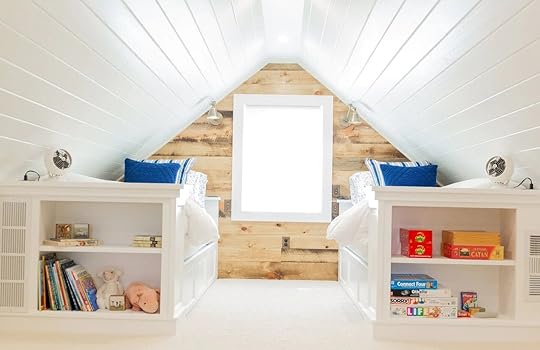
Photo: Airbnb

Photo: Airbnb
We challenge you to find a Rapid City cottage rental as cute and Instagrammable as this one. Built in 1917, the three-bedroom home has been revamped to suit contemporary tastes – including heated floors. A sublimely decorated open-concept living space with a mezzanine connects to the loft bedroom. Fling the back door open and you’ve got a covered patio and lawn with a swinging chair. Situated in the walkable and central Historic District.
Eight guests, three bedrooms
Price: $365 per night

Photo: Airbnb

Photo: Airbnb

Photo: Airbnb

Photo: Airbnb
This beautiful Airbnb Rapid City loft with a balcony puts you right in the heart of the action. Living spaces are adorned with tasteful modern fixtures and art. A chef-standard kitchen will appease those who prefer to cook while on the road while the bathroom is fitted with a tub. Perched above one of the best coffee shops in town, you can grab a brew and hit the road to tour the sights and check out the downtown restaurants and bars.
Three guests, one bedroom
Price: $315 per night

Photo: Airbnb

Photo: Airbnb

Photo: Airbnb

Photo: Airbnb
Perfect for larger families and groups, this downtown Airbnb Rapid City features all the trimmings of a luxury home. A statement oak staircase connects the two main floors while the roomy attic is the ultimate sleepover lair for kids. Fashionable furnishings are interspersed with retro pieces while a piano, library, and stash of board games set you up for nights in. This iconic holiday mansion is a stone’s throw from the best of downtown.
Sixteen guests, five bedrooms
Price: $590 per night
Travel is more fun when the whole pack gets to come. Bring your pet to these pet-friendly vacation rentals in Rapid City.
Incredible comfort and perfect views
Photo: Airbnb

Photo: Airbnb

Photo: Airbnb

Photo: Airbnb
This statement five-bedroom family home is spread over two floors with ample communal spaces including a movie theater. The deck offers fine views over the valleys south of Rapid City and comes with a hot tub. Of course, the star attraction of this Airbnb Rapid City vacation rental is the full-size basketball court in the backyard. There’s never been a better time to invest in a pair of court sneakers!
Ten guests, five bedrooms
Price: $960 per night
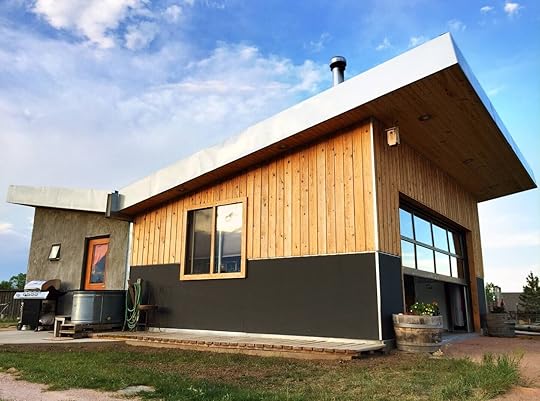
Photo: Airbnb
Located three miles out of town in the Black Hills, this Rapid City Airbnb tiny house rental is serene, peaceful – and stylish to boot. The studio space is roomy enough to accommodate a couple or a small family. A Murphy bed maximizes the space while the full kitchen and living zone are shrouded with plants. Crack open the garage door in the morning for rural views. Outside you’ve got a wiffleball field complete with balls and bats as well as a barbecue for al fresco suppers. Dogs are welcome. 
Four guests, one bedroom
Price: $350 per night
Matador Network's Blog
- Matador Network's profile
- 6 followers



